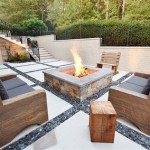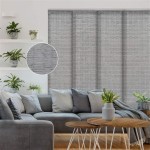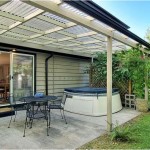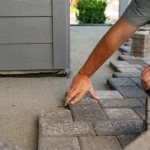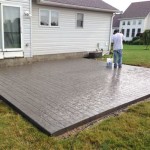Cast Aluminum Vs. Steel Patio Furniture Covers in Oregon, USA: A Comparative Analysis
The selection of patio furniture in Oregon requires careful consideration of material properties, particularly when evaluating cast aluminum and steel. The state's diverse climate, ranging from wet and mild conditions in the western regions to drier and more extreme temperatures eastward, significantly impacts the longevity and maintenance needs of outdoor furnishings. Patio furniture covers play a crucial role in mitigating these environmental effects, regardless of the core material of the furniture itself. This article provides a comparative analysis of cast aluminum and steel patio furniture, considering their inherent qualities and the effectiveness of covers in prolonging their lifespan and aesthetic appeal within the Oregon context.
Cast aluminum and steel offer distinct advantages and disadvantages in terms of durability, weight, aesthetic flexibility, and cost. Understanding these differences is essential when choosing patio furniture that will withstand the elements and complement the overall outdoor living space. Furthermore, selecting the appropriate type and quality of patio furniture cover is paramount to maximizing the investment in either material. The specific challenges presented by the Oregon climate, such as heavy rainfall, occasional snow, and strong UV exposure, necessitate a proactive approach to furniture protection.
The primary focus of this discussion centers on the comparison between cast aluminum and steel framed patio furniture. We’ll explore the characteristics of each material when exposed to environmental stressors, and evaluate the benefits of using furniture covers for each material’s protection.
Durability and Weather Resistance
Cast aluminum is renowned for its inherent resistance to rust and corrosion, a significant advantage in Oregon's often-damp climate. Unlike steel, which is susceptible to oxidation when exposed to moisture, cast aluminum forms a protective oxide layer on its surface. This layer prevents further corrosion, making cast aluminum a durable option for outdoor furniture. However, prolonged exposure to harsh chemicals or abrasive cleaning products can damage the protective oxide layer, potentially leading to pitting or discoloration over time. The structural integrity of cast aluminum can also be compromised by extreme impacts, as it is generally more brittle than steel.
Steel, conversely, requires protective coatings, such as powder coating or galvanization, to prevent rust. These coatings create a barrier between the steel and the environment, inhibiting the oxidation process. However, if the coating is scratched, chipped, or otherwise compromised, the underlying steel will be exposed to moisture, leading to rust formation. The rate of corrosion can be accelerated in coastal areas where salt air is prevalent. While steel is generally stronger and more resistant to dents and impacts than cast aluminum, the potential for rust remains a primary concern. The type of steel used also plays a role; stainless steel offers superior corrosion resistance compared to carbon steel, but it is typically more expensive. The longevity of steel furniture significantly depends on the quality and maintenance of its protective coating.
Patio furniture covers provide an additional layer of protection for both cast aluminum and steel. By shielding the furniture from rain, snow, and UV radiation, covers help to preserve the integrity of the materials and their protective coatings. Covers prevent water from pooling on furniture surfaces, reducing the risk of corrosion in steel and minimizing the potential for water damage in cast aluminum. Furthermore, they mitigate the effects of UV exposure, which can fade and degrade the finish of both materials over time. The effectiveness of a cover depends on its material, construction, and fit.
High-quality patio furniture covers should be made from water-resistant or waterproof fabrics that are breathable to prevent condensation buildup. Reinforced seams and vents are essential for durability and airflow. The cover should also fit snugly around the furniture to prevent it from being blown away in windy conditions, a factor to consider in many parts of Oregon. In addition, the cover should be treated with UV inhibitors to prevent it from fading or cracking under prolonged sun exposure. Regular cleaning and maintenance of the cover itself are also necessary to ensure its continued effectiveness. A damaged or dirty cover is much less effective at protecting the furniture beneath.
Weight and Portability
Cast aluminum is generally lighter than steel, making it easier to move and rearrange patio furniture made from this material. This is a practical advantage for homeowners who frequently reconfigure their outdoor spaces or need to store furniture during the off-season. The reduced weight also simplifies the process of covering and uncovering the furniture. However, lighter weight can also be a disadvantage in windy conditions, as cast aluminum furniture may be more susceptible to being blown around, particularly if it is not adequately secured. The furniture cover can also become like a sail, further increasing the risk of movement in heavy wind.
Steel, being denser and heavier, provides greater stability and resistance to wind. Steel patio furniture is less likely to be blown around, making it a suitable choice for exposed locations or areas prone to strong gusts. However, the weight of steel furniture can make it difficult to move and store, requiring more effort and potentially more people to handle it. This factor should be considered, especially for individuals with limited mobility or those who anticipate frequent rearrangement of their patio setup. The weight can also make applying and removing covers more challenging, particularly for larger pieces.
Patio furniture covers can indirectly affect the weight and portability considerations. While the cover itself adds a minimal amount of weight, it can make moving covered furniture more cumbersome, especially if the cover is not properly secured. A loose or ill-fitting cover can snag on furniture legs or other obstacles, hindering movement. Conversely, a well-designed cover with handles or straps can facilitate easier lifting and carrying. For heavier steel furniture, covers with built-in handles or reinforced lifting points can significantly simplify the process of moving covered pieces.
Consideration should be given to the design of the furniture when selecting a cover. Pieces with intricate wrought iron designs or sharp edges may require reinforced covers to prevent tearing or damage. Similarly, unusually shaped furniture may require custom-fitted covers to ensure adequate protection and ease of use. The presence of cushions or pillows also influences the choice of cover. Covers designed to accommodate cushions can save time and effort by allowing the entire piece to be covered at once, rather than requiring separate removal and storage of the cushions.
Aesthetics and Design Versatility
Cast aluminum is a highly versatile material that can be molded into a wide range of shapes and styles. Its malleability allows for intricate designs and decorative details, making it a popular choice for traditional and ornate patio furniture. Cast aluminum can also be powder-coated in various colors and finishes, providing ample opportunities to customize the look of the furniture. The smooth surface of cast aluminum lends itself well to various painting and finishing techniques, allowing for a seamless integration with different outdoor décor styles. However, the aesthetic appeal of cast aluminum can be diminished by weathering or damage to the finish. Scratches, dents, or fading can detract from the overall look of the furniture.
Steel, while not as easily molded as cast aluminum, offers a clean and contemporary aesthetic. Steel furniture often features simple lines and geometric shapes, appealing to those who prefer a modern or minimalist design. Steel can also be powder-coated in a variety of colors, providing a durable and attractive finish. The strength of steel allows for the creation of slender and elegant furniture frames, contributing to a lightweight and airy feel. However, the inherent industrial aesthetic of steel may not appeal to all tastes. Moreover, the potential for rust can compromise the visual appeal of steel furniture if not properly maintained.
Patio furniture covers play a vital role in preserving the aesthetic appeal of both cast aluminum and steel furniture. By protecting the furniture from UV radiation, covers prevent fading and discoloration of the finish. They also shield the furniture from dirt, dust, and other environmental pollutants that can dull the surface and detract from its beauty. Furthermore, covers prevent the accumulation of bird droppings, tree sap, and other stains that can be difficult to remove. Regular use of patio furniture covers can help to maintain the pristine look of the furniture, ensuring that it continues to complement the outdoor living space for years to come.
The color and style of the patio furniture cover can also contribute to the overall aesthetic of the outdoor space. Covers are available in a wide range of colors and materials, allowing homeowners to choose options that complement their existing décor. Neutral colors, such as beige, gray, and black, are popular choices for their versatility and ability to blend in with different surroundings. Brightly colored covers can add a pop of color to the patio, while patterned covers can create a more visually interesting look. The choice of cover should be based on personal preference and the overall design of the outdoor space.
Ultimately, the choice between cast aluminum and steel patio furniture depends on individual preferences, budget considerations, and the specific environmental conditions of the Oregon location. Regardless of the material chosen, investing in high-quality patio furniture covers is essential for maximizing the lifespan and aesthetic appeal of the furniture. Regular maintenance, including cleaning and proper storage, will further enhance the longevity and beauty of outdoor furnishings.

Wrought Iron Vs Cast Aluminum Patio Furniture

Wrought Iron Vs Cast Aluminum Patio Furniture

Wrought Iron Vs Cast Aluminum Patio Furniture

Wrought Iron Vs Cast Aluminum Patio Furniture

Wrought Iron Vs Cast Aluminum Patio Furniture

Does Your Patio Furniture Need To Be Covered Neighbor

Santa Barbara Outdoor Furniture Hanamint

Patio Time Black 5 Piece Aluminum Outdoor Dining Set With Gray Cushion Sad009 01 The Home Depot

What Patio Furniture Can I Leave Outside In The Winter Neighbor

Egeiroslife 3 Piece Aluminum Outdoor Patio Conversation Set With Webbing Chair Back And Gray Cushions Sf3 Gg B2 Hd4 The Home Depot
Related Posts


